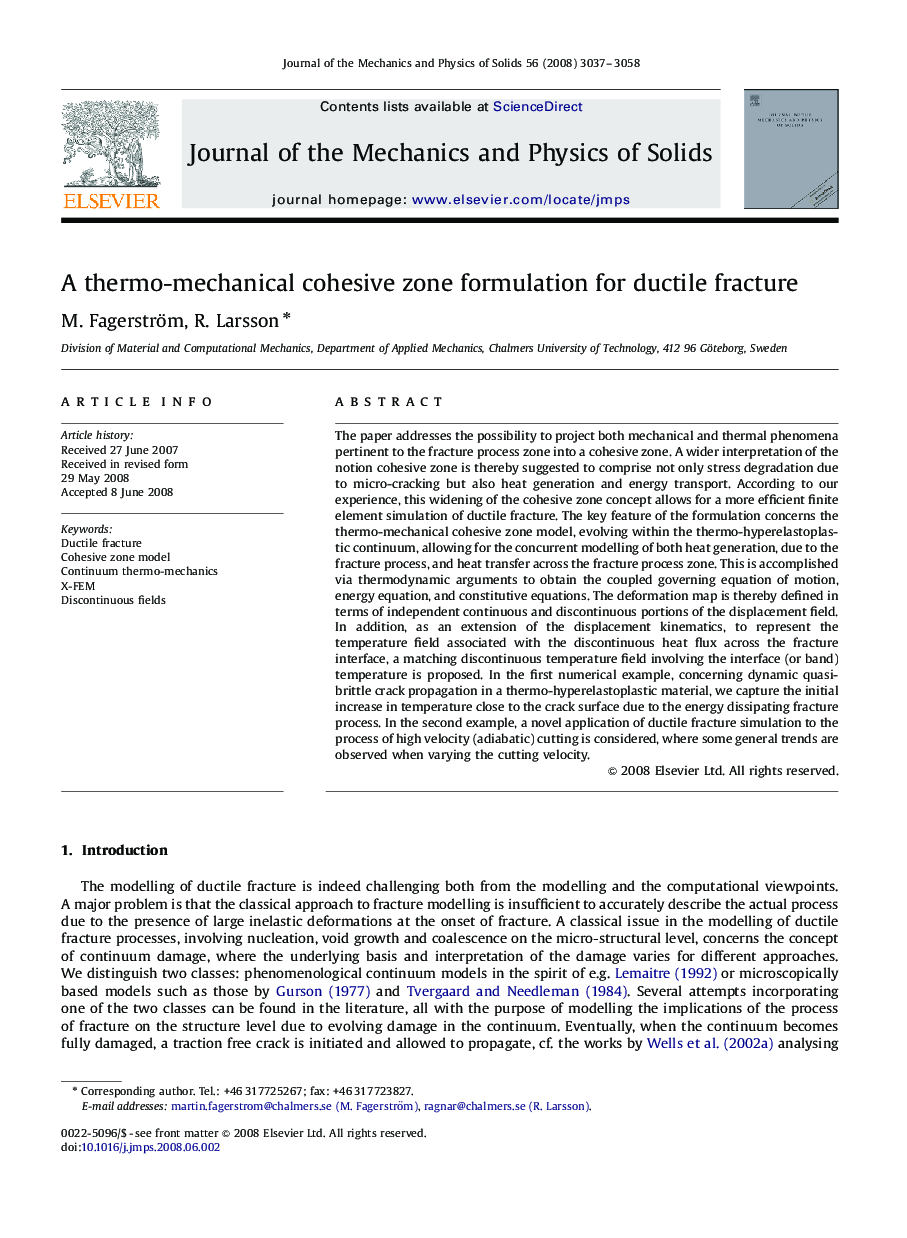| کد مقاله | کد نشریه | سال انتشار | مقاله انگلیسی | نسخه تمام متن |
|---|---|---|---|---|
| 796893 | 1467144 | 2008 | 22 صفحه PDF | دانلود رایگان |

The paper addresses the possibility to project both mechanical and thermal phenomena pertinent to the fracture process zone into a cohesive zone. A wider interpretation of the notion cohesive zone is thereby suggested to comprise not only stress degradation due to micro-cracking but also heat generation and energy transport. According to our experience, this widening of the cohesive zone concept allows for a more efficient finite element simulation of ductile fracture. The key feature of the formulation concerns the thermo-mechanical cohesive zone model, evolving within the thermo-hyperelastoplastic continuum, allowing for the concurrent modelling of both heat generation, due to the fracture process, and heat transfer across the fracture process zone. This is accomplished via thermodynamic arguments to obtain the coupled governing equation of motion, energy equation, and constitutive equations. The deformation map is thereby defined in terms of independent continuous and discontinuous portions of the displacement field. In addition, as an extension of the displacement kinematics, to represent the temperature field associated with the discontinuous heat flux across the fracture interface, a matching discontinuous temperature field involving the interface (or band) temperature is proposed. In the first numerical example, concerning dynamic quasi-brittle crack propagation in a thermo-hyperelastoplastic material, we capture the initial increase in temperature close to the crack surface due to the energy dissipating fracture process. In the second example, a novel application of ductile fracture simulation to the process of high velocity (adiabatic) cutting is considered, where some general trends are observed when varying the cutting velocity.
Journal: Journal of the Mechanics and Physics of Solids - Volume 56, Issue 10, October 2008, Pages 3037–3058